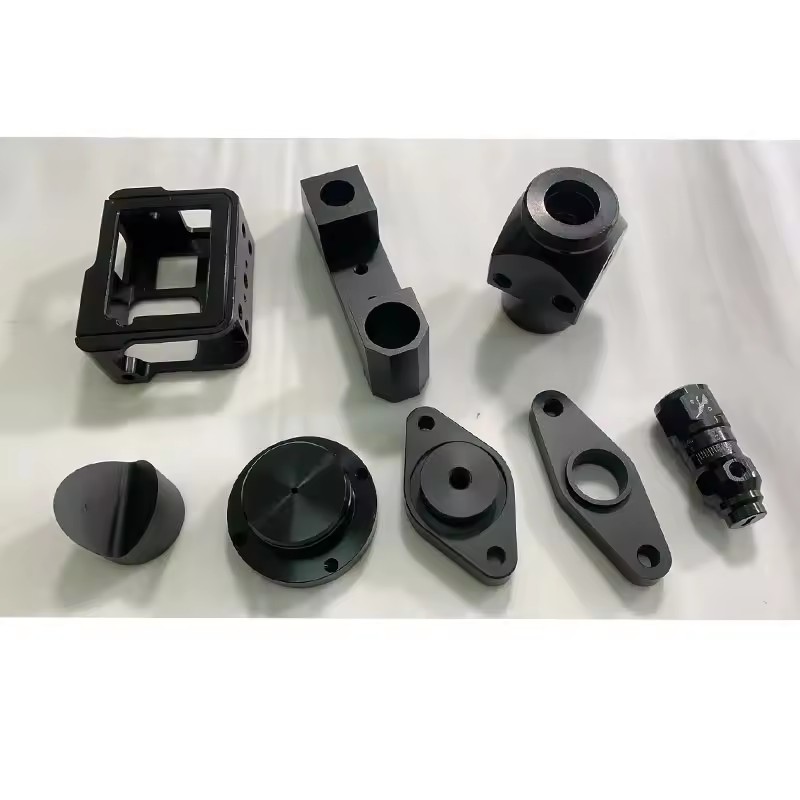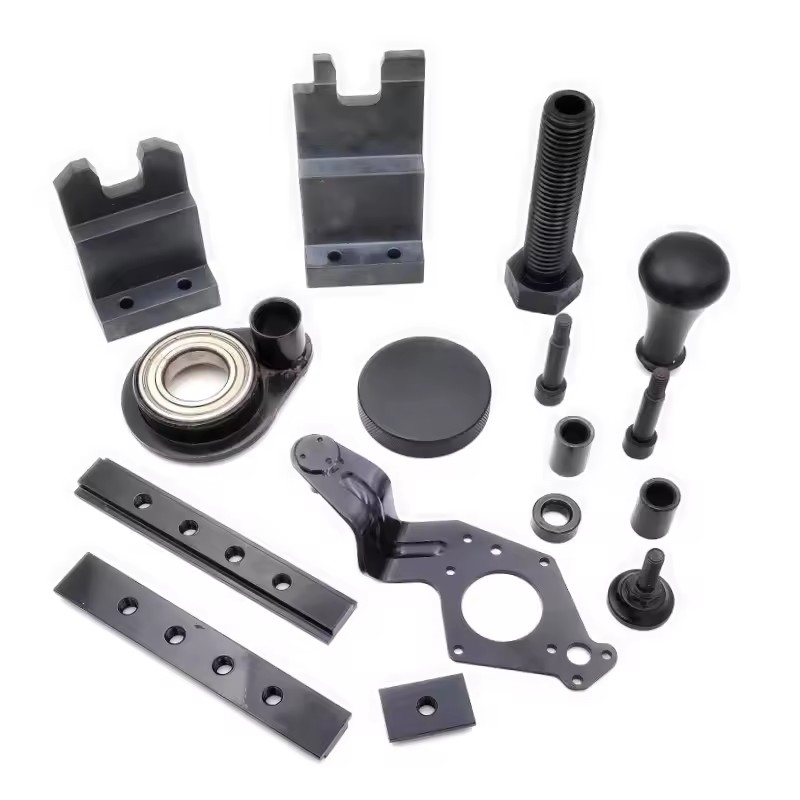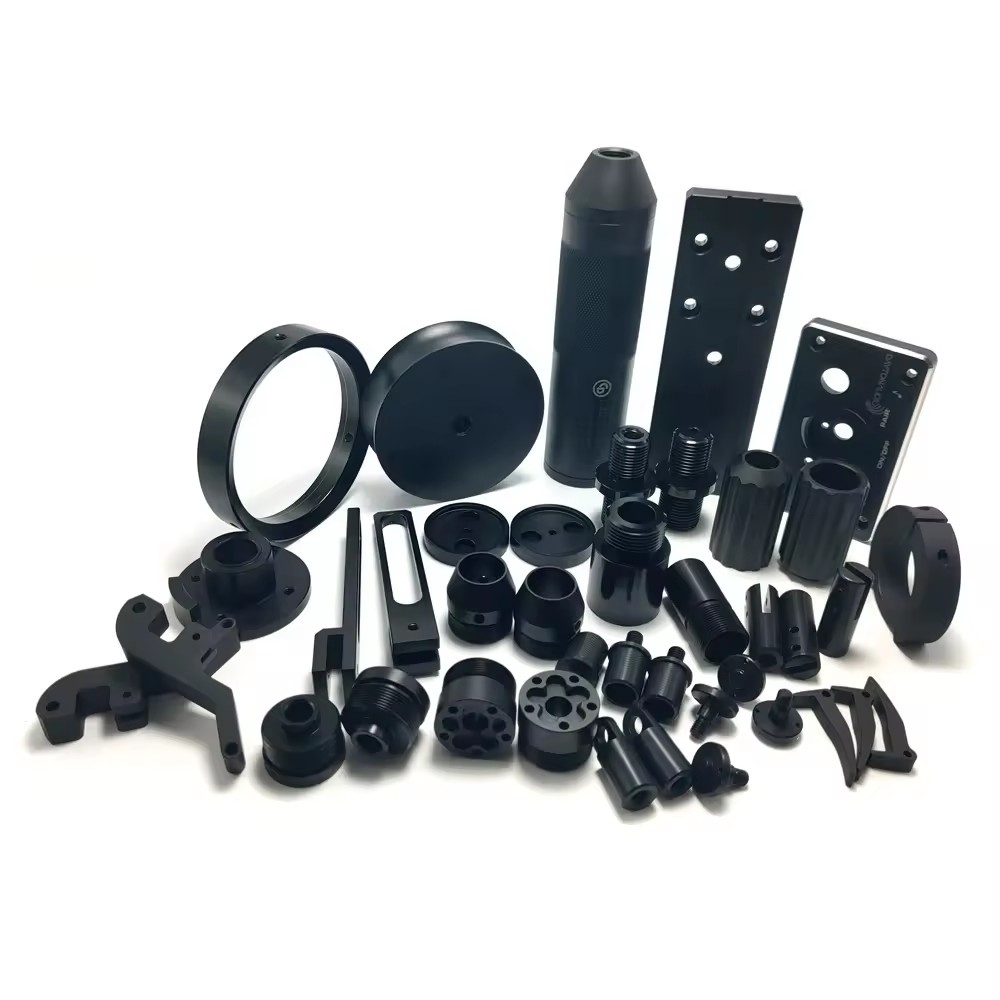A Complete Guide To Blackened Steel. Plus How To Blacken Steel
 Aug 21,2024
Aug 21,2024

Blackened steel has become a popular material choice in modern design and architecture, offering an aesthetically pleasing, durable finish that enhances the visual appeal of both residential and commercial spaces. Whether you're a professional in the manufacturing industry, a mechanical designer, or someone looking to incorporate blackened steel into your projects, this guide will provide you with everything you need to know about the material, the processes involved in blackening steel, and how to make the right choices for your designs.
What Is Blackened Steel?
Blackened steel refers to a surface finish that gives steel a dark, matte, or glossy appearance, achieved through various chemical or heat treatments. The process not only enhances the aesthetic appeal but also provides a layer of corrosion resistance, making it ideal for both functional and decorative applications.

Benefits of Blackening Steel
Blackening steel, also known as black oxide coating, is a finishing process that offers several advantages:
Corrosion Resistance:
- Black oxide provides a layer of protection against rust by creating a thin, protective barrier on the steel surface. It is especially effective when combined with a sealant, such as oil or wax, which further enhances its rust resistance.
Enhanced Appearance:
- The blackened finish gives steel a sleek, uniform, and aesthetically pleasing look. This is often preferred in applications where the appearance of the metal is important, such as in decorative hardware, tools, or automotive parts.
Reduced Light Glare:
- The matte finish of blackened steel reduces reflections and glare, making it ideal for applications where light reflection is undesirable, such as in optical instruments or certain types of weaponry.
Dimensional Stability:
- Unlike other coatings, blackening does not significantly change the dimensions of the steel, making it suitable for precision parts where tight tolerances are critical.
Increased Wear Resistance:
- The black oxide layer adds a slight increase in hardness, which can help to reduce wear and extend the life of the steel parts.
Cost-Effective:
- Blackening is a relatively inexpensive process compared to other surface treatments like painting or plating, making it a cost-effective solution for enhancing steel properties.
Does Blackened Steel Rust?
Blackened steel is more resistant to rust than untreated steel, but it is not entirely rust-proof. The black oxide layer itself provides some protection by reducing the steel's exposure to moisture and air, which are the primary causes of rust. However, without proper maintenance, such as regular application of oil or wax, the protective layer can wear off over time, leaving the steel susceptible to rusting.
Important Points to Consider:
-
Indoor vs. Outdoor Use:
- For indoor applications, blackened steel usually remains rust-free with minimal maintenance.
- For outdoor use, especially in harsh environments, additional protective coatings or frequent maintenance is necessary to prevent rust.
-
Maintenance:
- Regularly applying a protective oil or wax coating helps maintain the black oxide layer and enhances its rust resistance. This is particularly important in environments with high humidity or exposure to saltwater.

Blackened Steel Finish Processes
The finish of blackened steel can vary depending on the method used. Common processes include:
- Hot Blackening: Involves dipping the steel in a series of tanks filled with different chemicals, including caustic soda and nitrite, followed by an oil bath.
- Cold Blackening: Utilizes a chemical reaction at room temperature, often involving a selenium dioxide solution, to create the black finish.
- Painted Products That Look Like Blackened Steel: While not true blackened steel, certain paints can mimic the appearance of blackened steel for those seeking a less labor-intensive option.
Super Matte, Ultra-Gloss Matte, Neo-Industrial, Extreme Gloss Matte
These terms refer to different levels of finish that can be achieved on blackened steel, from the flat, non-reflective surface of super matte to the high-shine, reflective surface of extreme gloss matte. The choice of finish will depend on the desired aesthetic and functional properties.
Preparing To Blacken Steel
Before beginning the blackening process, it's essential to properly prepare the steel to ensure an even and lasting finish.
Steel Alloys, Mill Scale, and Galvanizing
The type of steel alloy used will impact the blackening process. For example, carbon steel, which is commonly blackened, requires thorough cleaning to remove mill scale—a layer of iron oxides that forms on the steel surface during hot rolling. Additionally, galvanized steel, which is coated with zinc for corrosion resistance, may need special treatment to remove the galvanizing layer before blackening.
Mechanical Finishes
Mechanical finishes, such as grinding, sanding, or polishing, may be necessary to smooth the steel surface before blackening. The smoother the surface, the more uniform the final blackened finish will be.
Safety When Blackening Steel
Blackening steel involves working with chemicals and high temperatures, both of which can be hazardous. Proper safety measures should always be followed to protect yourself and others.
Protective Gear
When blackening steel, always wear appropriate protective gear, including gloves, goggles, and long sleeves, to prevent skin contact with chemicals and burns from hot liquids.
Ventilation
Ensure adequate ventilation when working with chemicals, particularly during the cold blackening process, as some solutions can release harmful fumes.
Fire Safety
Since hot blackening involves the use of flammable liquids like oil, it's crucial to have fire safety equipment on hand, including a fire extinguisher rated for chemical fires.
The Pros and Cons of Blackening Steel Methods
Choosing the right blackening method depends on various factors, including cost, desired finish, and application. Below is a comparison of the pros and cons of hot and cold blackening methods.
| Method | Pros | Cons |
|---|---|---|
| Hot Blackening | Durable, corrosion-resistant finish Suitable for large-scale production |
Involves hazardous chemicals Requires specialized equipment |
| Cold Blackening | Simpler process No heat required Can be done at room temperature |
Less durable than hot blackening Not as corrosion-resistant |
Blackened Steel Alternatives (Easier and More Affordable)
For those who find traditional blackening methods too complex or costly, there are several alternatives that can achieve a similar look.
Painted Products That Look Like Blackened Steel
Paints and coatings that mimic the appearance of blackened steel offer a quick and easy alternative. These products are especially useful for projects where the steel will not be exposed to harsh environments.
Patinas and Chemical Conversion Coatings
Patinas, which are chemical treatments that create a weathered look, can also be applied to steel to achieve a blackened appearance. Chemical conversion coatings, which form a protective film on the steel surface, are another option for creating a black finish without the need for extensive processing.
666
Why Should I Use Blackened Steel In My Design?
Blackened steel offers several advantages that make it a preferred material in modern design and architecture.
Aesthetic Appeal
Blackened steel's sleek, industrial look makes it a popular choice for interior and exterior design. Its dark, rich color can create a striking contrast with lighter materials, adding depth and sophistication to any space.
Durability
When properly treated, blackened steel is highly durable and resistant to corrosion, making it suitable for both indoor and outdoor applications.
Versatility
Blackened steel can be used in various applications, from furniture and fixtures to architectural elements like railings and panels. Its versatile nature allows designers to incorporate it into both traditional and contemporary spaces.
Sample Specification Blackened Steel Panels Interior
When specifying blackened steel for interior panels, consider the following guidelines:
- Material: Choose a steel grade appropriate for indoor use, such as A36 or A500.
- Finish: Specify the desired finish, whether it's a super matte, ultra-gloss, or neo-industrial look.
- Installation: Ensure that the panels are installed using corrosion-resistant fasteners to prevent rusting.
Sample Specification Blackened Steel Railing Components
For blackened steel railings, the following specifications should be considered:
- Material: Use a strong steel alloy, such as A572, that can withstand the structural demands of a railing.
- Finish: Opt for a durable finish, such as hot blackening, to ensure the railing remains resistant to wear and tear.
- Maintenance: Specify any required maintenance procedures, such as regular oiling, to preserve the finish.
CNC Machining Blackened Steel Parts
When CNC machining is combined with black oxide finishing, the result is a high-precision, durable, and aesthetically pleasing component. Here's a breakdown of the benefits and applications:
| Feature | CNC Machining | Blackened Steel | Combined Benefits |
|---|---|---|---|
| Precision | Ensures high accuracy and tight tolerances. | Does not alter the dimensions of parts. | Precision parts with a consistent black finish. |
| Durability | Reduces wear and tear through precise fits. | Adds a protective wear-resistant layer. | Extended lifespan and reduced maintenance needs. |
| Corrosion Resistance | Machined parts fit perfectly in assemblies. | Provides a protective layer against rust. | Rust-resistant parts suitable for challenging environments. |
| Aesthetic Appeal | Allows for intricate and customized designs. | Offers a uniform, matte black finish. | Sleek, professional appearance for functional and decorative parts. |
| Cost-Effectiveness | Reduces material waste and production time. | A low-cost finishing process. | High-quality parts at a lower overall cost. |

Applications of CNC Machined Blackened Steel Parts
| Industry | Applications |
|---|---|
| Automotive | Engine components, brackets, fasteners |
| Aerospace | Precision parts that require high durability and corrosion resistance |
| Tooling | Durable tools and fixtures with a wear-resistant finish |
CNC machining blackened steel parts provides a combination of precision, durability, and aesthetic appeal. Whether for automotive, aerospace, or tooling applications, this combination ensures high-quality, cost-effective solutions that meet both functional and visual requirements.
For reliable and precise CNC machining services with black oxide finishes, you can trust Tuofa to deliver excellence in every component.
Conclusion
Blackened steel is a versatile and aesthetically pleasing material that offers numerous benefits for both functional and decorative applications. Whether you choose to blacken steel yourself or purchase pre-blackened products, understanding the different methods and finishes available will help you make the best choice for your project. Remember to always prioritize safety when working with chemicals and heat, and consider alternative methods if traditional blackening processes seem too complex or costly.
With this guide, you're well-equipped to incorporate blackened steel into your designs, ensuring a high-quality finish that enhances the overall look and durability of your project.
 Tel/WeChat:
Tel/WeChat:  Email:
Email: 
 Home
Home
 Metal Hardness: Charts, Processes, and Testing
Metal Hardness: Charts, Processes, and Testing 







